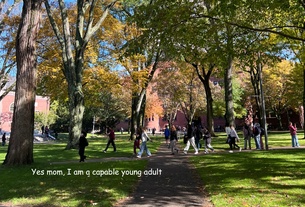When hedge fund billionaire Kenneth C. Griffin ’89 donated $150 million to Harvard for financial aid and an endowed professorship earlier this year, it was page one news from coast to coast. The gift—the largest in the history of the College—came just months after the University publicly launched its $6.5 billion capital campaign, and it provided clear evidence to many that the record-seeking fundraising effort was gaining traction among the University’s richest alumni.
On campus and in campaign stump speeches, the gift was lauded as “transformational” by Dean of Admissions and Financial Aid William R. Fitzsimmons ’67 and “a marvelous standard of generosity” by University President Drew G. Faust.
{shortcode-0419680b5ae1a750246b950e854903834dba6271}
But as it rippled through the national media, news of Griffin’s donation was accompanied by an oft-leveled criticism that supporting Harvard, and its $32.7 billion endowment, potentially comes at the expense of other worthy, yet less-established institutions. “Cut Off Harvard to Save America,” economist Richard K. Vedder wrote on BloombergView, joining several other pundits in a small but vocal criticism of adding to an already large reservoir of capital.
Indeed, giving to Harvard means giving to the richest institution of higher education in the world and one of the wealthiest nonprofit organizations in the United States. Every dollar put into Crimson coffers is one that could have gone elsewhere, to an aid organization or an independent laboratory with fewer resources, where experts say the impact is more immediately felt.
On the other hand, according to University donors and fundraising experts, Harvard’s ability to attract hundreds of millions of dollars in donations each year—including $1 billion in the last eight months alone—in such a crowded philanthropic marketplace points to the perceived value of investment and the savvy of its outreach. Where many other organizations offer a singular cause with potentially uncertain results, those alumni and experts say that Harvard presents donors with a proven track record of success and a unique stake in an elite community of scholars and leaders.
All things considered, they say, investing in Harvard’s social capital is one of the surest bets on the philanthropic market.
SEPARATING FROM THE CROWD
Of the more than $316 billion that the public service initiative Giving USA estimates Americans donated to charitable causes in Fiscal Year 2012, a near-record $31 billion went to colleges and universities, according to the Council for Aid to Education.
Given those numbers and Harvard’s own projected giving total, the University will likely be among the five or so highest grossing charitable causes in the United States when Harvard’s current fiscal year ends on June 30, among groups like the United Way, the Salvation Army, the Task Force for Global Health, and Feeding America. Stanford, Harvard’s closest university fundraising rival of late, which raised a record $931 million in Fiscal Year 2013, is expected to fall into second place after nine years at the front of the university fundraising pack.
All of which points, like Griffin’s gift, to the traction of Harvard’s campaign and the priorities that have been laid out for donors, they say.
Experts divide philanthropic gifts into two major categories: those that reduce suffering in the near and long term and those that invest in human potential. Giving to a higher education institution like Harvard capitalizes on both of those motivations, according to Eugene R. Tempel, president emeritus of the Indiana University Foundation and the founding dean of the School of Philanthropy there.
“If Harvard can do outstanding research with big brains and big egos I think that is worthwhile,” says Paul G. Schervish, the director of Boston College’s Center on Wealth and Philanthropy. “[Donors] look at the University as the foundation for intellectual capital.”
Harvard and other academic institutions can present donors with an all-embracing philanthropic opportunity—one in which supporters can donate to an art museum or cancer research or even unrestricted funds, contributing to the resolution of immediate global problems, while also financing future generations of problem solvers.
To this end, the University actively tries to sell itself to as many different types of donors as possible, playing to their individual interests, says Vice President of Alumni Affairs and Development Tamara E. Rogers ’74, a strategy that allows it to encompass the social missions of many other organizations.


